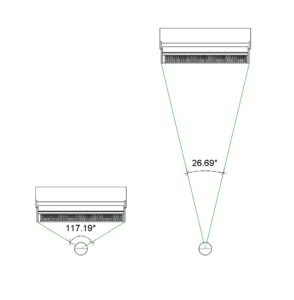
Sound source distance perception is poorly understood. Auditory distance perception is a subject area largely neglected by psychoacoustic researchers. Consequentially, immersive audio reproduction formats struggle in their ability to provide convincing sound source distance illusions. As sound moves around the virtual stage, the impression can quickly jump between a state of convincing simulated distance to one that occurs inside the listeners head. With a better understanding of distance hearing, distance illusions can be simulated more convincingly.
Cues used to resolve visual distance may inform the methods by which distance hearing is achieved. This supposition arose from the observation that several visual distance cues have an identical auditory distance cue equivalent. An object will appear visibly smaller with increased distance. A reduction in size may also indicate the retreat of a sound. This thesis reports an experimental examination of sound source width on perceived auditory distance. Sounds varying in width were presented to participants in an audio-based survey.
It was discovered that adjustments in sound source width can affect the perceived distance of a sound. Changes in width must be apparent and easily heard for the effect to occur. If the processing of sound involves the adjustment of width only, absent of all other distance cues, the direction of movement on the front-back axis is not always certain. Sounds should be processed to include as many distance cues as possible to increase the likelihood of a robust distance illusion.
PDF: https://eoghantyrrell.com/soundsourcewidthadjustmentasacueforauditorydistance/